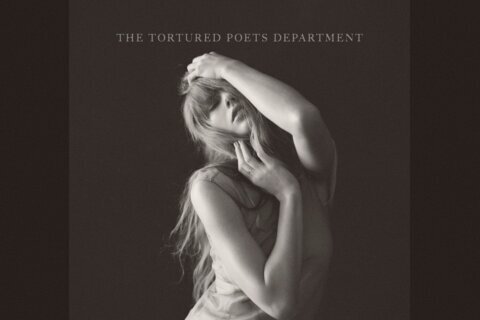Becoming Bob Dylan: Earliest photos capture music legend before he was famous
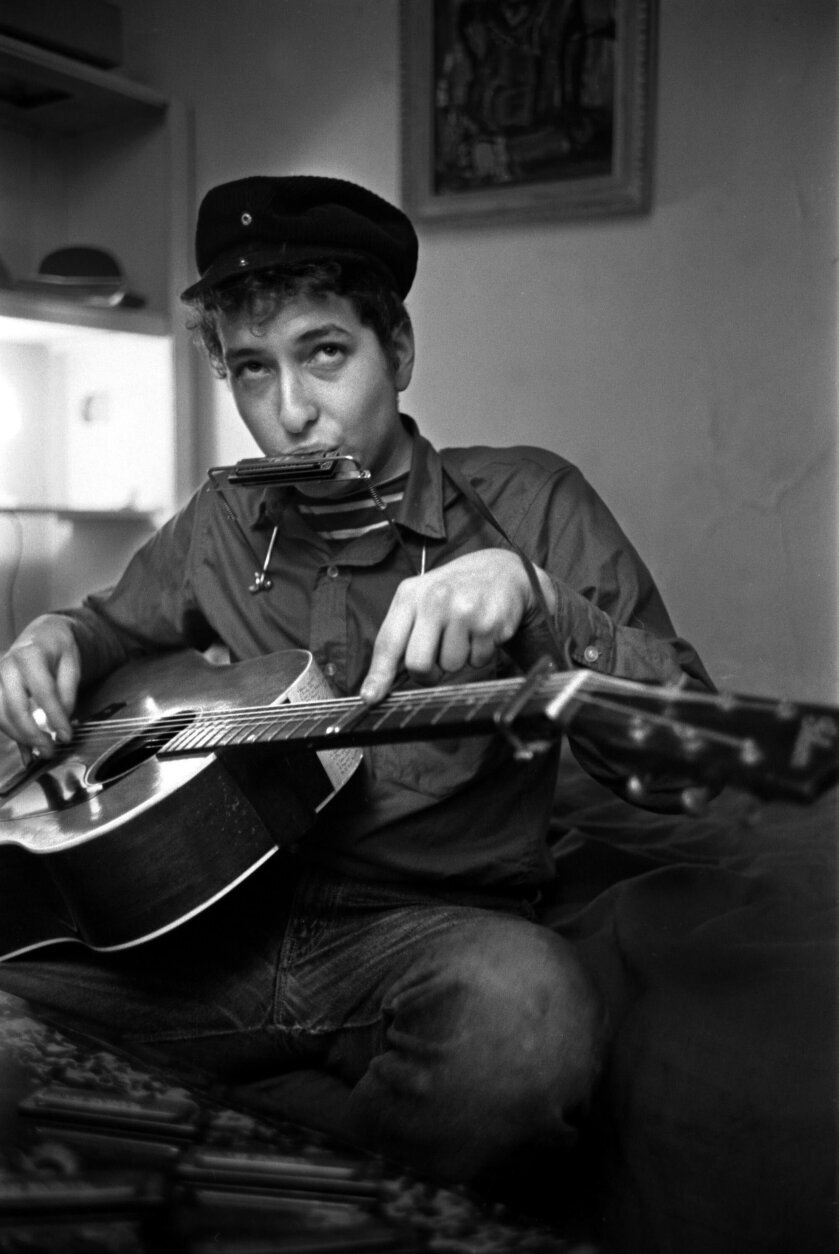 1/6
1/6
Bob Dylan in his Greenwich Village apartment, in early 1962.
(Ted Russell/Govinda Gallery)
When Russell photographed Dylan in November 1961, at Gerde’s Folk City, “Dylan’s first album had been recorded, but not yet released,” said Murray. “Bob was, no pun intended, a complete unknown,” referencing a lyric from “Like a Rolling Stone” that Dylan wouldn’t write until 1965.
At the time, Dylan was mostly performing folk classics written by other artists. His first album, titled “Bob Dylan,” contained only two songs written by the Minnesota-born Robert Zimmerman.
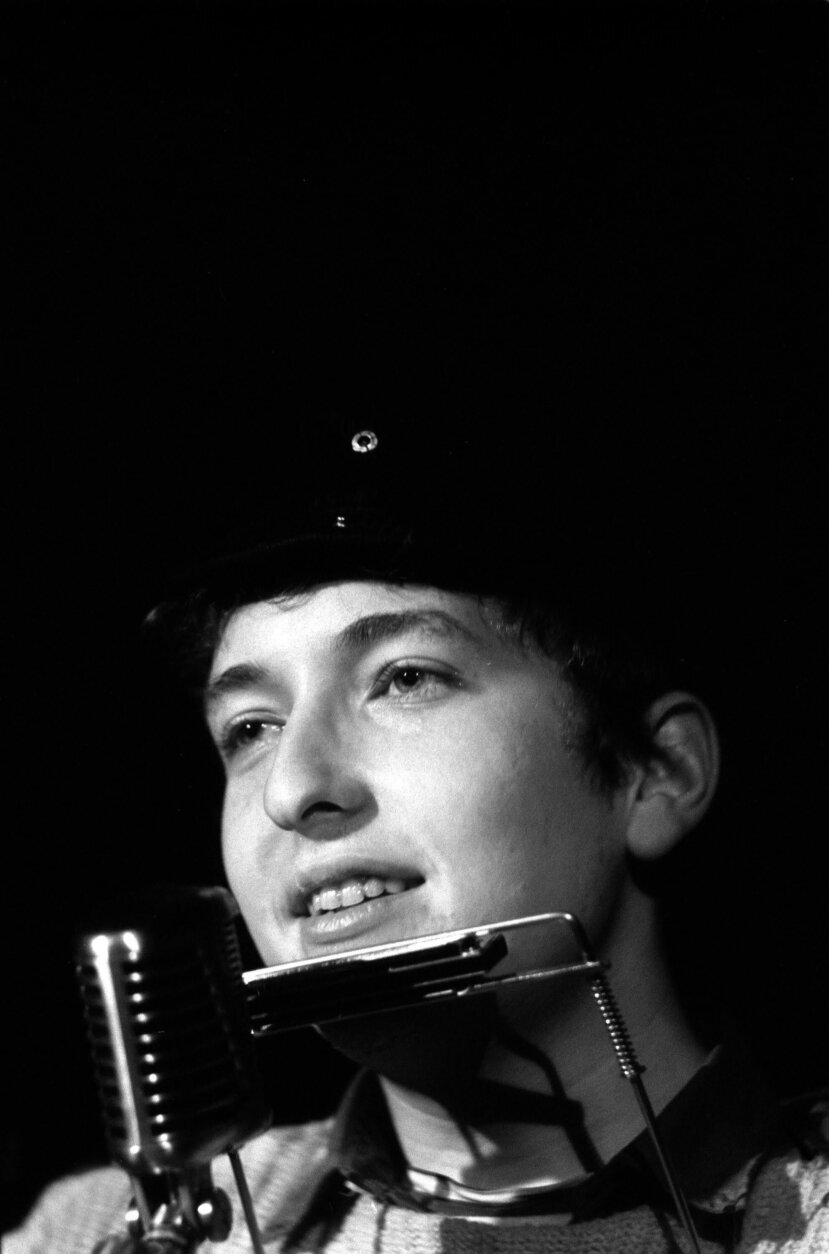 2/6
2/6
Bob Dylan performs at Gerde’s Folk City in the East Village, in Nov. 1961.
(Ted Russell/Govinda Gallery)
“Ted’s photos of Bob in his early days show him wearing a great Greek fisherman’s cap,” said Murray. “That’s what Woody wore, too.”
Many of Russell’s photos show an unguarded Dylan, carrying a box of items as he and Rotolo moved into their apartment, “on 4th Street, as in ‘Positively 4th Street,'” the title of a 1965 single for Dylan.
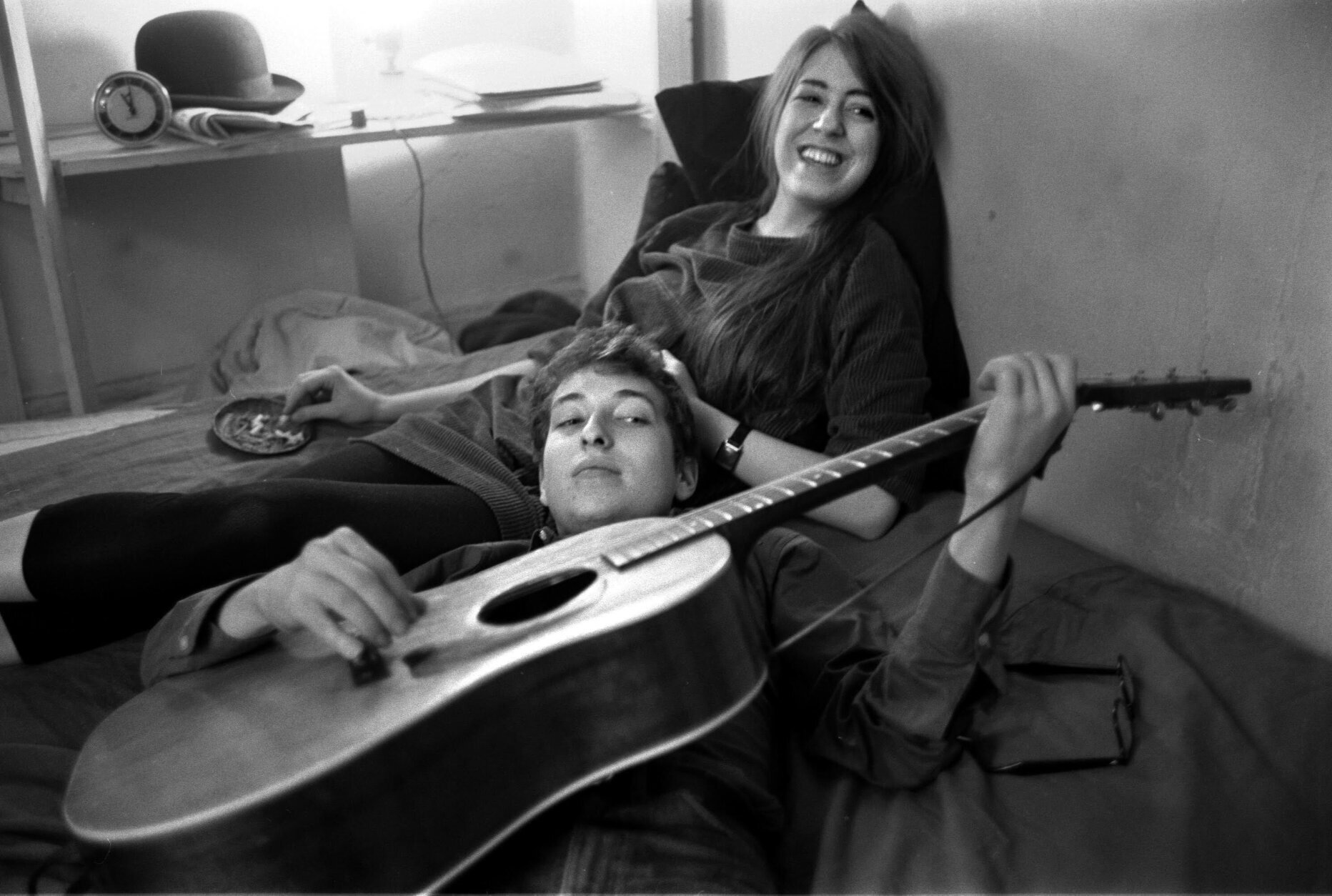 3/6
3/6
In 1962, Bob Dylan in his Greenwich Village apartment with his then-girlfriend Suze Rotolo.
(Ted Russell/Govinda Gallery)
Russell photographed Dylan two more times, after the release of his first albums, as his fame grew, and as his records contained more songs he’d written.
In 1963, on an assignment for Life magazine, Russell photographed Dylan receiving the Paine Award for distinguished service for the fight for civil liberty from the National Emergency Civil Liberties Committee, at a dinner in New York City.
Author James Baldwin, who was a speaker that evening, sat on the dais with Dylan.
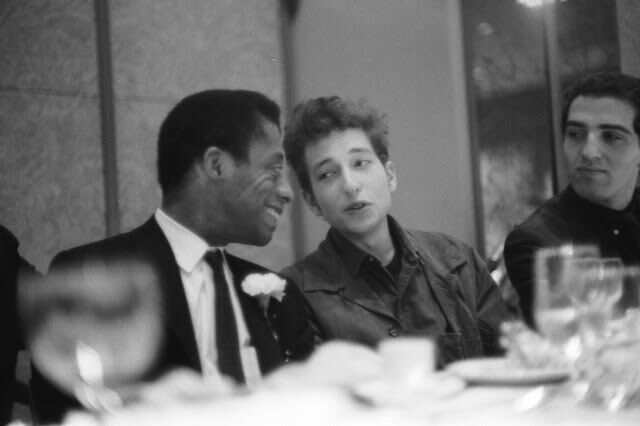 4/6
4/6
Author James Baldwin and Bob Dylan chat during a 1963 dinner, in which Dylan received an award in his fight for civil liberty.
(Ted Russell/Govinda Gallery)
“He’d seen a lot in the world, since he came to New York in 1961,” said Murray. “And it’s reflected in his songwriting — it’s reflected in ‘Blowing in the Wind,’ it’s reflected in ‘The Times they are a-Changing.”
Dylan was “very upset by JFK’s assassination,” said Murray. With the civil rights movement “in full force, Bob was very much sympathetic and impacted by these incredible events.”
In a 1964 session, Russell’s photos show Dylan in his apartment, sitting at his desk, using a manual typewriter: “The great poet that he is, he interpreted those feelings in these wonderful songs that we all can relate to.”
The Bob Dylan Center has an identical typewriter in its permanent collection, said Murray.
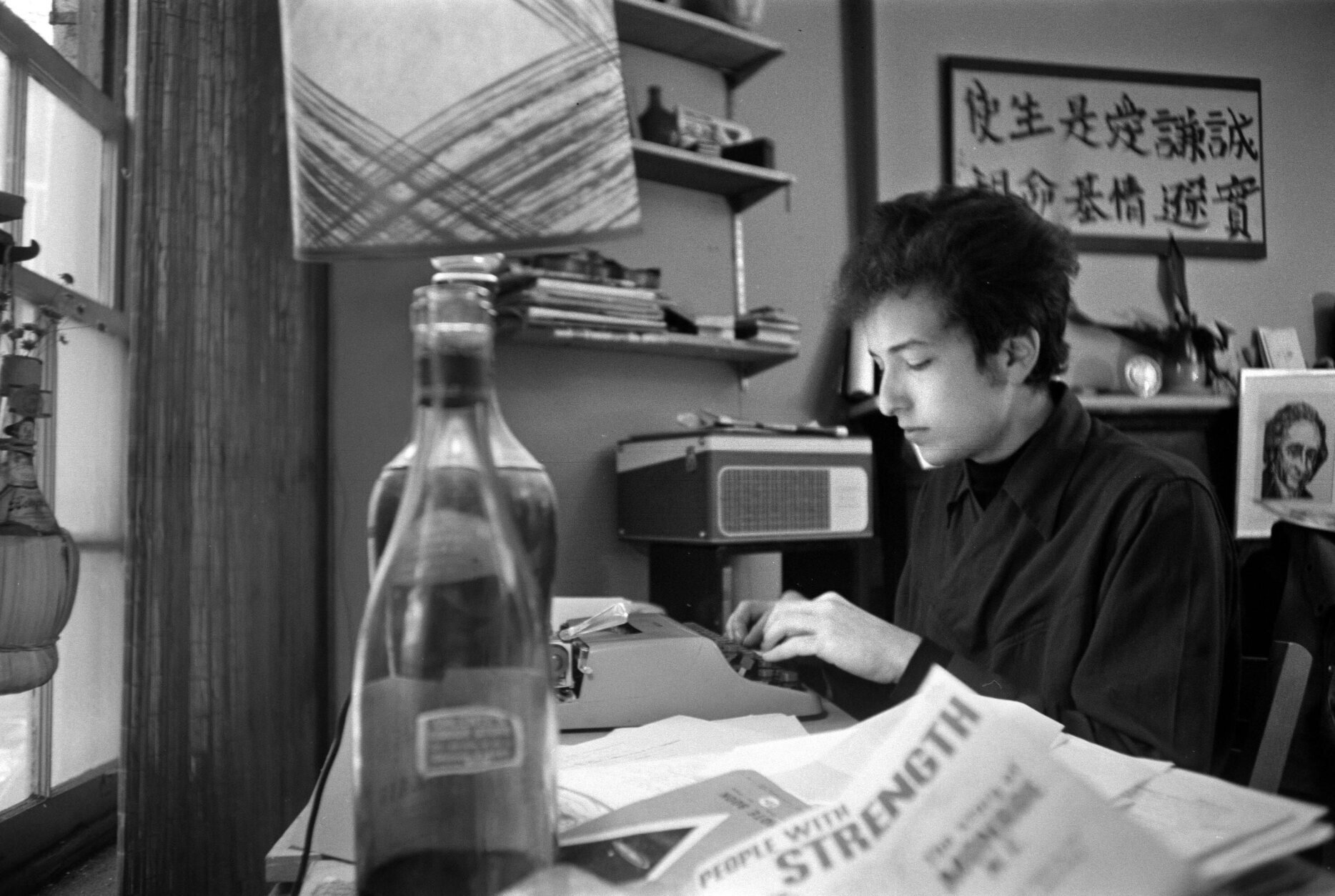 5/6
5/6
Ted Russell’s 1964 photographs of Bob Dylan show the increasingly-popular songwriter, at the typewriter in his apartment.
(Ted Russell/Govinda Gallery)
Murray said Russell’s photographs, over three sessions, capture the pivotal time in Dylan’s life, as he morphed from an unknown folk musician into a well-known observer and performer, whose songs have become synonymous with the quest for civil rights.
“When I look at Ted Russell’s photos of Bob Dylan, what strikes me profoundly is the freshness and the youth,” said Murray.
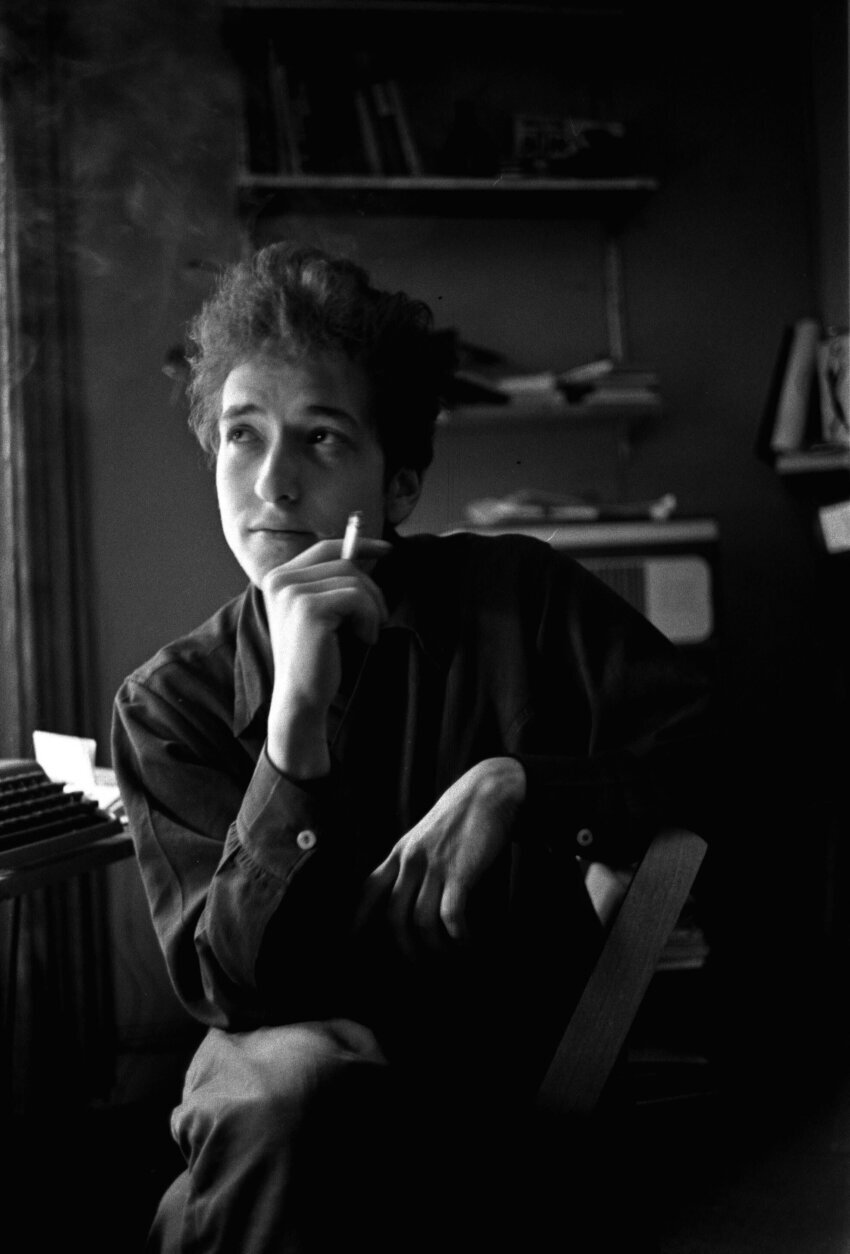 6/6
6/6
Ted Russell photographed Bob Dylan three times, between the years of 1961 and 1964.
(Ted Russell/Govinda Gallery)
“He had the whole world in front of him now,” said Murray. “And, this young poet was about to transform popular culture in ways that he himself had no idea would happen.”
Murray will be in Tulsa for the April 26 opening of “Becoming Bob Dylan: Photographs of Ted Russell 1961-1964,” at the Bob Dylan Center.
Neal Augenstein
Neal Augenstein has been a general assignment reporter with WTOP since 1997. He says he looks forward to coming to work every day, even though that means waking up at 3:30 a.m.








